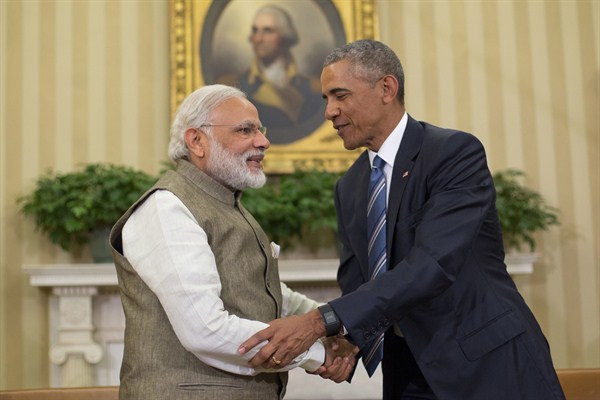Indian Prime Minister Narendra Modi’s visit to Washington last week was striking in its normalcy. In contrast to the drama of the early years of the transformation in this bilateral relationship, it’s become commonplace to see Indian and American leaders praise the partnership and work through often tedious bilateral issues. The strategic trajectory is becoming clear: Cooperation is growing on managing the global commons and ensuring a peaceful Asia.
Over the past two decades during which the relationship between the world’s two most-populous democracies has been transformed, references to their shared values have been abundant. In the past, however, invoking democratic values and linking Gandhi to Martin Luther King used to cover up for some very deep differences over nuclear nonproliferation and other security issues. Indians worried about giving up some of their freedom of maneuver in exchange for a serious partnership with Washington. And despite the lofty rhetoric, it wasn’t clear if India had the capacity, or the interest, to project real influence and power in its region and beyond.
When President Bill Clinton hosted Prime Minister Narasimha Rao in May 1994, there was a sense of great promise and potential in U.S.-Indian relations. But the discussion was fraught with friction over nuclear issues, human rights and Indian resentment of American statements on Kashmir and disputes with Pakistan. Clinton was committed to the process and deeply curious about the country. As a National Security Council staff person at the time, I witnessed Clinton’s ability to engage the taciturn Rao over the grand sweep of Indian history in the 20th century, and his role in the struggle against the British that led to partition and independence in 1948.

